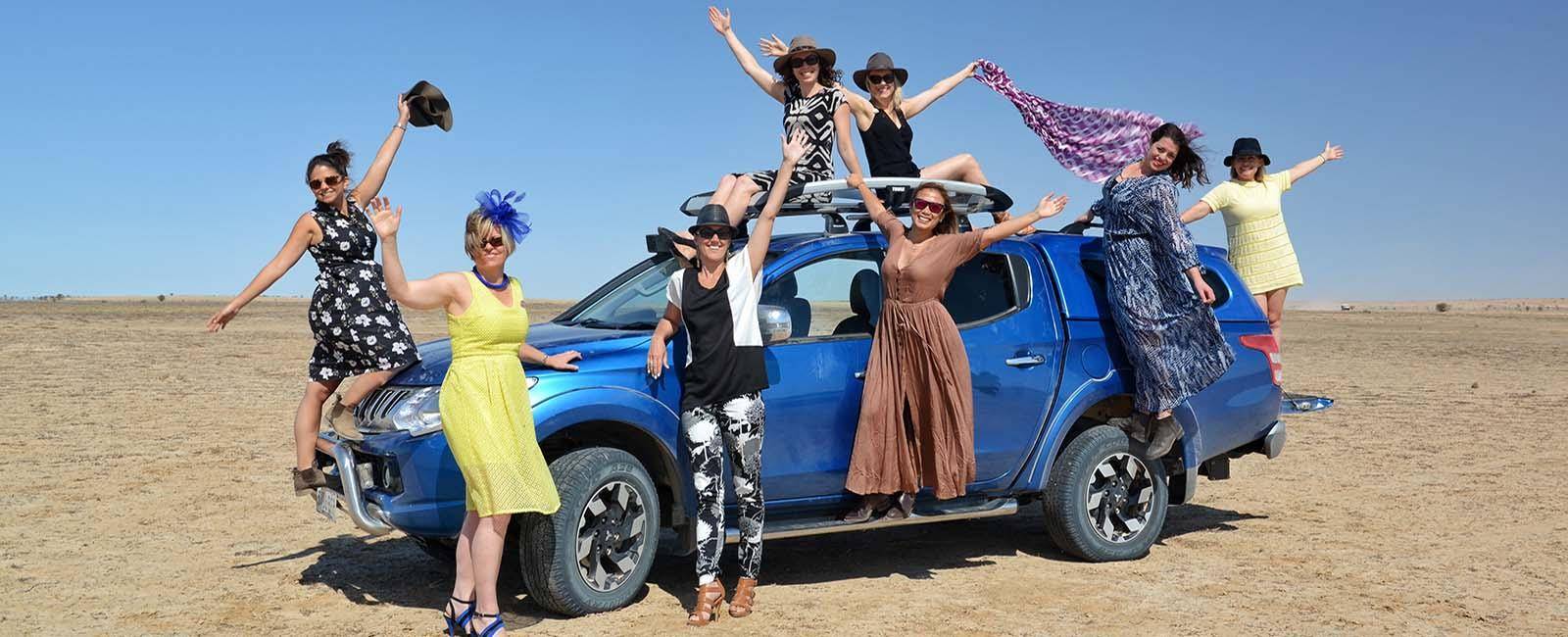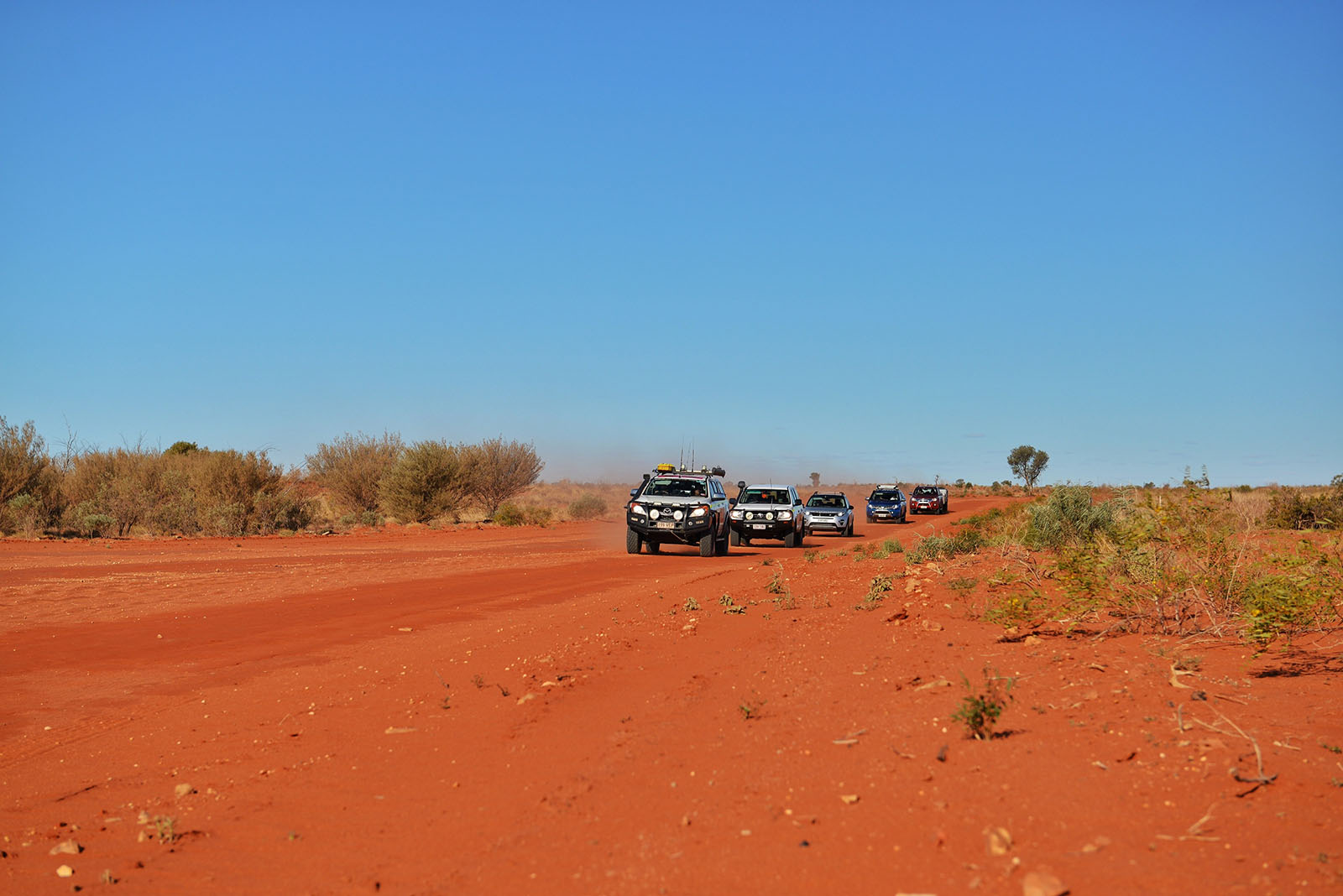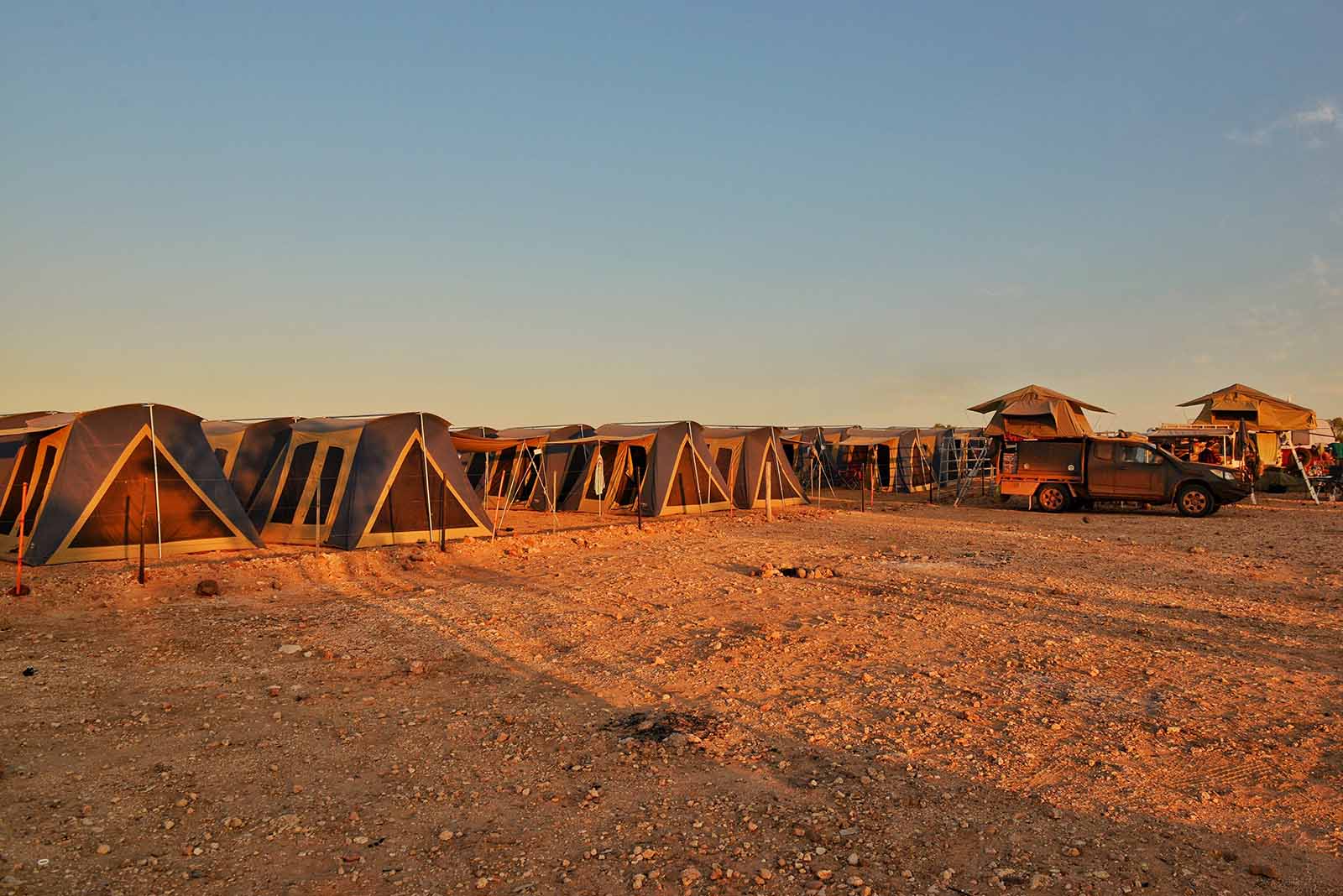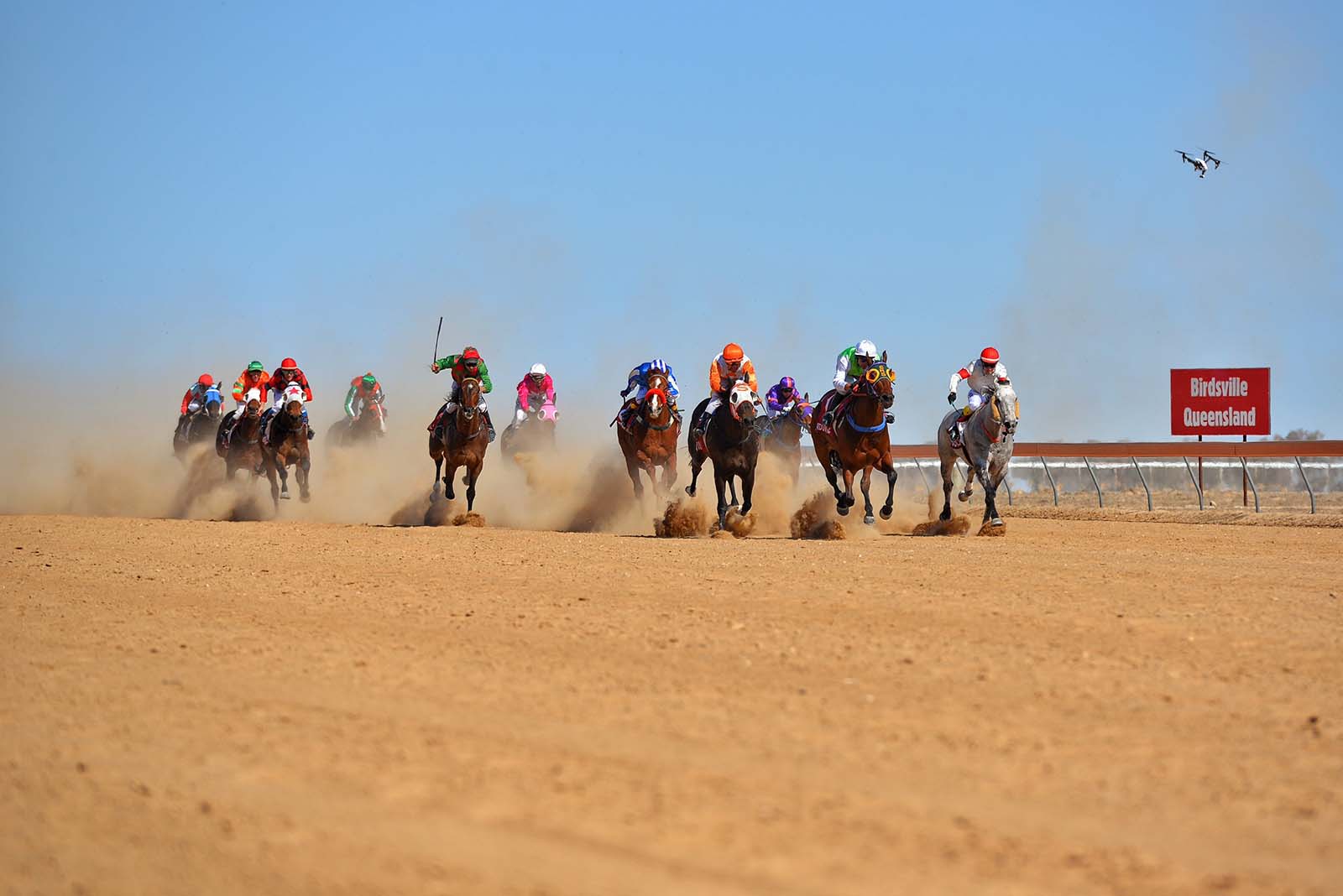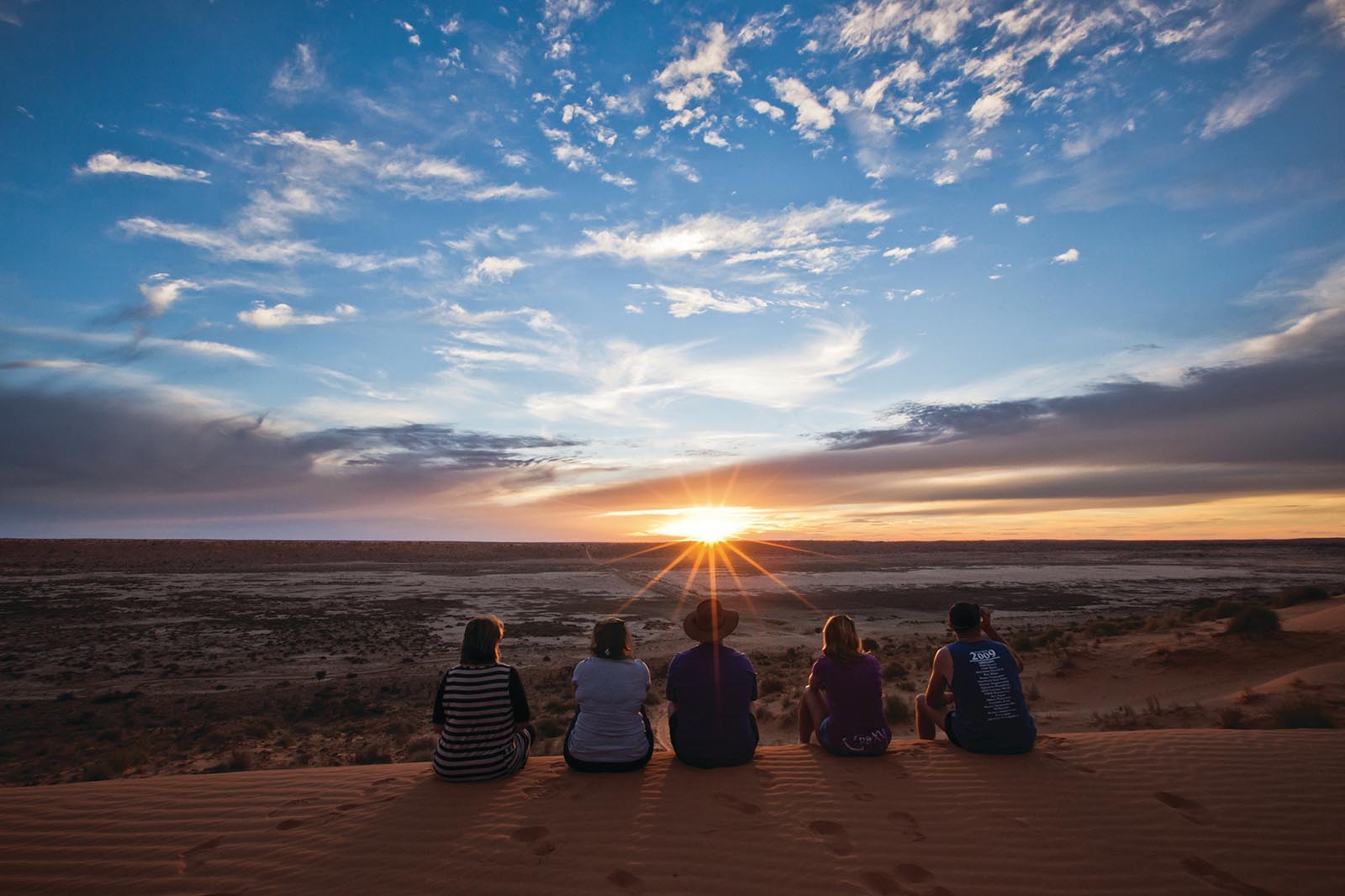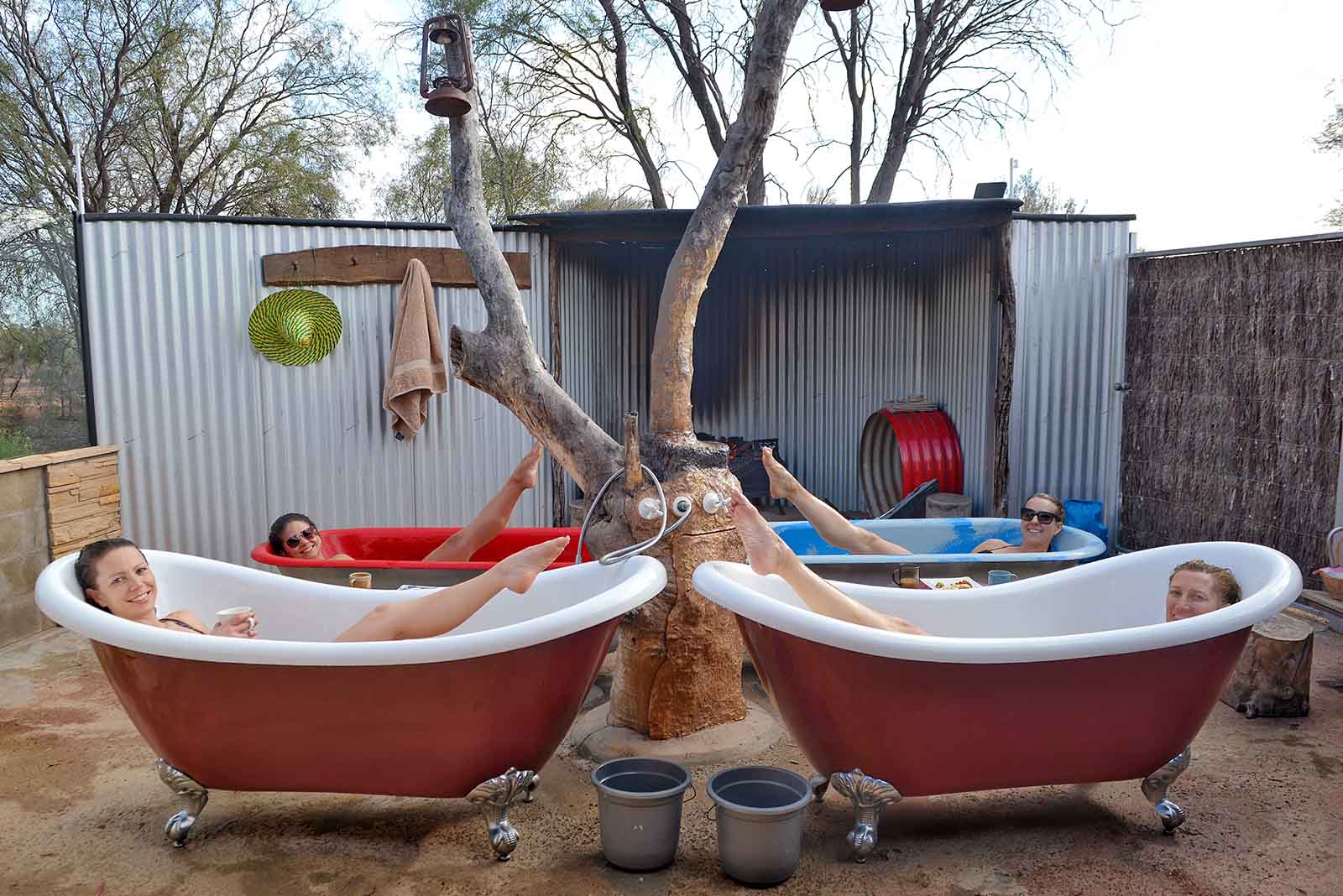
The Birdsville Races are a hot ticket on Queensland’s event calendar but this road trip shows that half the fun is getting there.
I must admit, fascinators have always interested me more than form guides but the opportunity to visit Australia’s most remote outback race meet, the Birdsville Races, piqued my curiosity.
As a sucker for long road trips, I wasn’t even perturbed by 1,500 plus kilometres between Brisbane and Birdsville. After all, there were plenty of vanilla slices to sweeten the journey from A to B(irdsville).
Birdsville is affectionately known as the town in the middle of nowhere, but it equally could be described as the town in the middle of everywhere – a little blip on the map in the western-corner of Queensland, similar drive-distances – give-or-take a few hundred kilometres – from Brisbane, Adelaide and Alice Springs.
On the road
Distance is no deterrent to thousands who come from far and wide on one weekend in September each year to attend the legendary race that stops the outback. Well, 13 races, in fact, with a not-too dusty prize purse of $200,000 handed out over the two-day carnival.
The one-pub town swells from a population of around 120 to 10,000, many of them first-timers like us. We opted for a four-day ‘scenic route’ from Brisbane, travelling via St George, Cunnamulla and Innamincka for the opportunity to put our 4WD-ing skills to the test. But, trust me, the journey to Birdsville is all part of the adventure and building in time for stops along the way is essential – from morning tea in Toowoomba (home of the World’s Largest Lamington record) and lunch in Goondiwindi (best hot chips in the outback), to the Nindigully Pub, Queensland’s oldest watering hole and home of the 1.2kg beef patty served in a burger bun ... and that’s just Day One.
By Day Three we reached Eulo (almost 900km west of Brisbane), Queensland’s answer to Rotorua, and an opportunity to shave years off our race-day look with a soak in 40 million-year-old artesian mud at the Eulo Mudbaths (loaded with age-defying minerals like magnesium, zinc and silica). Owner Ian Pike reckons it’s so good “it could take corrugations out of iron”. I was sold!
Seeing the sights
Refreshed, we pushed on to Thargomindah where we were gifted a bumper sticker that reads ‘London, Paris, Thargomindah’. The sticker is no joke, this outback town with a population of just 240 was the third city in the world to adopt electric street lights in 1893, one day after London and Paris. It’s worth visiting Thargo (as they say in the outback) just to discover this piece of trivia. We enjoyed lunch at Coffee on Dowling, a cute café with kangaroos in the backyard, real coffee and daily home-made specials on the menu.
Continuing 275km west of Thargomindah we crossed the state line into South Australia and the territory where explorers Burke and Wills met their end. We arrived at the Dig Tree by sunset – perfect timing to capture it in the afternoon glow – but unlike Burke and Wills who returned to the Dig Tree only to find their supplies depleted, we had packed our own and enjoyed a cuppa and brushed up on Australian history with a visit to the display centre.
Our last night before Birdsville was spent at Innamincka, the smallest town on our outback adventure with a population of just 12 people. We stayed at the Innamincka Hotel, the sister property to the Birdsville Hotel. Its Outamincka Bar serves up some of the best pub grub this side of Brisbane. My pick was a steak and mushroom pie topped with a hash brown rather than pastry. I was sceptical at first but the potato top was a nice, textural touch.
Welcome to Birdsville
Arriving in Birdsville is something of a culture shock, joining the cavalcade of vehicles carrying crowds of punters into town after days of travelling on outback roads, where peak-hour has been shared with little more than emus and dust.
You know it’s a big event when the town’s caravan park goes through 48km of loo paper in just two days.
Camping is the (only) accommodation of choice during race week. Powered and unpowered caravan and camp sites are available at the local caravan park on a first-in, first served basis, while the banks of the Diamantina River (where camping is free) transform into a gypsy camp of tents and caravans, exploding out from the gates of the race track as far as the eye can see.
For anyone without BYO accommodation, pre-booked Rent-a-Tents in the pop-up tent city are the go. We checked in to these ‘luxury’ digs – twin-share tents decked out with two single stretchers, and mattresses. Sleeping bags, bed linen and other add-ons such as folding chairs and tables, eskies and more are available at extra cost. The staff on site do a remarkable job of keeping the showers and loos spotless – a portable set-up on the back of a semi-trailer, packing enough water pressure to wash the red dust (and remnants of Eulo mud) out of our hair.
It’s not just the remote location that’s novel about the Birdsville Races; the claypan track set against red sand dunes is a world away from the green turf and champagne bars of Eagle Farm, Randwick or Flemington. As the horses jump out of the barrier, the dust mushrooms and the sound of hooves hitting dirt is deafeningly good. Track-side the enthusiasm among punters is contagious, the sun warm and the beer ice-cold – a winning trifecta even before placing a bet.
The race that stops the outback
Anything goes in the dress code department (the more kooky and colourful, the more highly praised), but I would recommend sandals over stilettos and fashionistas, take note: in Birdsville, orange really is the new black. I started the day in a floral dress but ended it like everyone else, in a bright hue of burnt orange from top to toe.
In between races, there’s plenty of entertainment, from cocktail parties to fashions on the field and gourmet food options. Food trucks and the ‘Birdsville Barista’ roll in from around the country, serving up everything from chicken Chow Mein to wood-fired pizza.
When the outback sun gives way to a sky full of stars, follow the line of revellers who make their way to Birdsville’s iconic watering hole, the Birdsville Hotel.
The homeward journey
Just as remarkably as party goers arrive, they depart. By Sunday afternoon the town is drained, as though someone let the plug out as punters disappear in a puff of dust. On the way out we detoured to Big Red, the biggest sand dune in the Simpson Desert, about 30km out of town. At about 30 metres high it’s a popular spot for sand tobogganing and boogie board surfing, but the best time to go is sunset to watch the sun bathe the desert in a warm and ruddy glow.
Our return journey was much faster, making only two stops on the way home, overnight in Quilpie, home of one of the largest deposits of boulder opal in the world and Mitchell, known for its Great Artesian Spa.
All in all, it had been a long and not all winding road, a journey where my fascinator had taken a backseat to an Akubra. Next time my goal is to tackle the form guide.
GETTING THERE
PLAN YOUR TRAVEL

